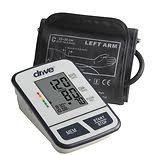Imagine this: You’re sipping your morning coffee, determined to stay on top of your health. You’ve decided to invest in a blood pressure monitor, but there’s just one problem—you’re stuck between the traditional manual option and its high-tech digital counterpart. Which one should you choose?
Don’t worry. We’re here to break it all down for you in a way that’s easy, fun, and practical. By the end of this guide, you’ll know exactly which blood pressure monitor fits your lifestyle. Let’s dive in!
The Classic Charm of Manual Blood Pressure Monitors

Manual blood pressure monitors, or sphygmomanometers, have been the go-to choice for medical professionals for decades. They’re like the classic car of health gadgets—reliable, durable, and undeniably effective when handled by someone who knows what they’re doing.
Why You’ll Love Them:
1. Pinpoint Accuracy: Manual monitors are the gold standard for precise readings. If you value exact numbers, this is your ally.
2. Built to Last: No batteries, no fragile electronics—just solid, dependable mechanics.
3. Always Ready: Power outages? Dead batteries? No problem here!
4. Affordable Elegance: These devices are budget-friendly, giving you high-quality results without breaking the bank.
But Here’s the Catch:
1. They come with a learning curve—using a stethoscope and inflating the cuff manually requires practice.
2. They’re not the fastest option when you’re in a rush.
3. Taking a reading by yourself can feel like a juggling act, especially if you’re new to it.
The Modern Magic of Digital Blood Pressure Monitors

Digital monitors are the sleek, smart gadgets of the health world. With just the press of a button, they inflate the cuff, measure your pressure, and flash your results on a screen. Think of them as your personal health assistant, always ready to lend a hand.
Why They’ll Steal Your Heart:
1. Effortless Operation: Just strap it on, press a button, and let the magic happen.
2. Fast and Furious: Get your reading in seconds, perfect for busy mornings or mid-day check-ins.
3. Smart Features Galore: Some models come with memory storage, irregular heartbeat detection, and even smartphone connectivity.
4. Portable and Travel-Friendly: Slip it into your bag, and you’re good to go.
But They’re Not Perfect:
Digital blood pressure monitors often present the following problems:
1. Accuracy can waver if the device isn’t calibrated or positioned correctly.
2. They’re battery-powered, so keeping spare batteries around is a must.
3. Advanced features often come with a higher price tag.
So, Which One Is Right for You?
Go Manual If:
– You’re a healthcare professional or a precision enthusiast.
– You’re on a budget but don’t want to compromise on accuracy.
– You’re okay with learning a new skill to get the most out of your monitor.
Go Digital If:
– Convenience is your middle name, and you love gadgets that make life easier.
– You need quick readings on a regular basis.
– You want a device that does more than just measure blood pressure (hello, smart features!).
Why Your Choice Matters
Choosing the right blood pressure monitor is about more than just numbers—it’s about empowering yourself to take control of your health. Whether you opt for the timeless reliability of a manual monitor or the cutting-edge convenience of a digital one, the most important thing is that you use it regularly and correctly.
Ready to make your pick? Explore your options, weigh the pros and cons, and take a step toward better health today. After all, your heart deserves it!
Pro tip: If you need assistance with your healthcare technology devices, Merdge Technologies is ever ready to help answer your questions at all times.
Give us a follow, drop your comments and questions.
